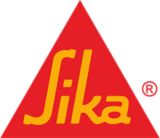Concrete Roof Deck Issues Webinar
The roofing industry has seen an increase in the number of issues with moisture and concrete roof decks, both new projects and existing. Concrete roof decks has been used for many years, so what has changed over the past few years?
Learning Objectives:
- Claims for moisture related problems with roofing systems applied to concrete decks increasing.
- Roofing systems applied to concrete decks are no more prone to leakage than other deck types.
What are Moisture Sensitive Materials?
- Organic (cellulose based) material susceptible to mold and decay with prolonged exposure to RH above 80%.
- High RH within the roofing system prone to condensation when the outside temperature drops.
Posted on: 07/23/2019
Sika Roofing, a Division of Sika Corporation, is a Registered Provider with The American Institute of Architects Continuing Education Systems (AIA/CES). Credit(s) cannot be earned for the above webinar as the live event has concluded. However, we are happy to schedule a Lunch and Learn for your team!
Learn about Sika Roofing's Lightweight Insulated Concrete System here.

